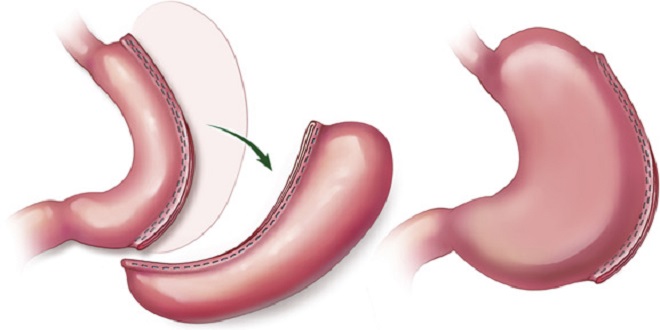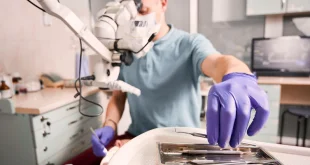Bariatric revision surgery can address various problems patients experience after their primary procedure. It can correct anatomic issues, as well as address metabolic comorbidities such as reflux and diabetes. Endoscopic sleeve revision is an outpatient, non-surgical procedure that tightens the dilated stomach of a gastric sleeve gastrectomy. It can assist patients in regaining satiety and restarting their weight loss plans.
Weight Loss
Many patients experience insufficient weight loss following sleeve gastrectomy and may require surgery to achieve better outcomes. Endoscopic revision of sleeve gastrectomy can also improve GERD symptoms and reduce complications, such as leaks or strictures. The stomach pouch created during sleeve gastrectomy can stretch or dilate over time, leading to increased food intake and poor satiety. In this case, a revision to decrease the pouch size can help. While you are sedated, your doctor will perform the SIS operation by inserting an endoscope—a tiny tube with a camera attached—down your throat. The endoscope will be used to guide the tool into your stomach. Your doctor will then use the tool to place sutures and create plications, folds that tighten the stomach, making a smaller volume. The procedure takes less than an hour and doesn’t require any external incisions. Your recovery will be much faster than with traditional surgical revisions. In a few days, most patients will resume their regular routines. Weight loss after a correction will depend on how much the stomach has stretched and what portion sizes you can now tolerate. The goal is to restore fullness and satiety so you can eat smaller meal portions and get your weight loss back on track.
Symptom Relief
Weight loss surgery can dramatically reduce appetite and satiety while rewiring the anatomy of your stomach and small intestine to change hormones that influence your food intake. Many patients lose 50% or more of their excess body weight and keep it off long-term. But, like any surgical procedure, complications can arise. Suppose you’re experiencing excessive bloating, discomfort, or difficulty swallowing after your gastric sleeve operation. In that case, a revision can help restore your weight loss success and immediately relieve the symptoms that keep you from eating healthy. SIS is an endoscopic procedure that’s ideal for patients who have had a sleeve gastrectomy more than two years ago and are struggling with some weight regain. It works by reducing the volume of a stretched stomach sleeve that has enlarged over time. The bariatric surgeon gives you an anesthetic and uses an endoscope—a tiny tube with a camera and light at the tip—to enter your mouth and move it toward your stomach. The doctor places a set of suturing devices at the end of the endoscope that can fold and tighten sections of your stomach to create plications or pockets. In the sleeve gastrectomy, about three-quarters of your stomach is removed to create a smaller “sleeve” or tube-like structure that you fill with small portions. The smaller stomach makes you feel full after eating less, and the sleeve changes hormones that affect appetite.
Improved Health
A surgical weight-loss procedure such as sleeve gastrectomy has been shown to improve certain obesity-related medical conditions. It significantly reduces blood sugar and cholesterol levels and lowers blood pressure, and it may eliminate the need for some prescription drugs. While the sleeve gastrectomy is not reversible, it can be modified with revision surgery. A minimally invasive technique called endoscopic sleeve gastroplasty reduces the amount of the remaining sleeve by removing some stomach tissue. It restores the sense of fullness when eating smaller portions and can help patients lose more weight and address comorbidities like acid reflux. This outpatient procedure is an excellent option for patients who have experienced anatomic or medical problems following their primary bariatric surgery. It is much less complicated than an open or laparoscopic revision and has a low risk of complications. It also allows the patient to resume a regular, consistent diet more quickly. After sleeve gastrectomy, the body produces less of the hormone ghrelin, the hunger hormone. As a result, many people experience significant decreases in their appetites and can eat small amounts of food without experiencing hunger or discomfort. However, it is important to eat regularly and choose nutritious foods to ensure proper healing of the stomach. It’s essential after a surgical procedure such as ESG.
Better Quality of Life
Many people who have had sleeve gastrectomy report a better quality of life. They can exercise, get more sleep, and generally feel healthier. However, it is essential to realize that weight loss surgery works best as part of an integrated support program that includes behavioral therapy, nutrition guidance, and exercise. People who struggle with gastric reflux (GERD) or swallowing difficulties after a sleeve may be candidates for endoscopic bariatric revision. During this treatment, sutures are used to construct plications that reduce the capacity of your stomach, hence decreasing its size. It can help improve GERD symptoms and allow you to eat more than your permitted sleeve before surgery. Those who have experienced weight regain after sleeve gastrectomy may be candidates for revision as well. The goal is to reduce the size of your stomach again through a minimally invasive procedure that can be done at an ambulatory surgery center.
 Isaiminia World Breaking News & Top Stories
Isaiminia World Breaking News & Top Stories




